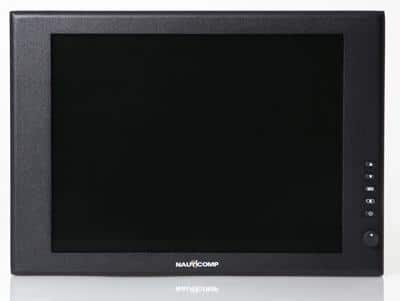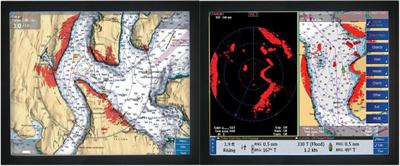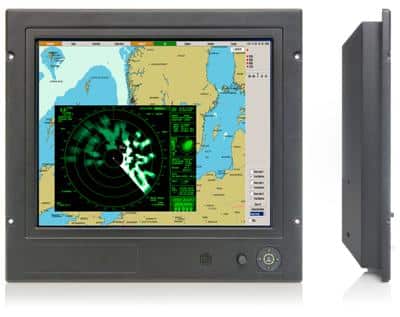There’s no doubt that marine electronics have gotten more powerful and more fully integrated with other boat systems, yet the technology has sometimes seemed to be outstripping a system’s ability to impart the information to the user. After all, a screen split into four quadrants, with the sections carrying huge amounts of detail on charts, radar information, sounder data, and more—and that’s user-specified detail, remember—means that screen space has become more and more valuable. The philosophy is simple: The systems have the information at the ready, so the more display real estate you have, the more information is flowing smoothly before your eyes. Monitors have gotten bigger, easier to use, simpler to install, and better all around.

Wait for the Movie
Bruce Willis in Die Hard: With a Vengeance should not take precedence over navigating that tricky channel in low light. So why is the helmsman staring at a 10-inch plotter display while Bruce is crystal-clear and larger than life on the saloon flatscreen? It’s not even his best work. But the lesson is clear: That’s why Nauticomp displays (www.nauticomp.com) are actually televisions, but better equipped for marine conditions and needs. The latest from the company, the Signature II Series, is available in 12-, 15-, and 19-inch sizes and combines sunlight-readable brightness with true dimming down to zero percent, to help preserve night vision. Six inputs mean everything that should be on the helm is there, and rugged, waterproof construction includes bonded glass and a powder-coated frame. The 12- and 15-inch units use convection cooling for extended operating temperatures up to 158 degrees, while the 15- and 19-inch displays are available as touchscreens.

Glass Attack
Surround yourself with data with the KEPM GB-24 from KEP Marine (www.kepmarine.com). The 24-inch displays maximize valuable helm space and put all manner of data in front of the user, who can control the screen settings through a remote unit. A wide viewing angle, dimming to black, and picture-in-picture mode mean the user can see in a range of conditions, while hard-coated glass and a marine aluminum UV-protective powder-coated bezel and rear case complete the durable package.

Command Center
The 23.1-inch Maritime Multi Display from Hatteland Display (www.hatteland-display.com) comes with a multipower input, meaning it’s ready to install with the power system on any vessel. The TFT active matrix liquid-crystal panel uses LED backlighting for increased light intensity. Optical Technology bonding means the unit will be a reliable addition to the helm over its extended life. A Hatteland Multifunction Connector allows for a single cable connection, while controls on the front bezel simplify user image adjustments.
Pay close attention to the installation of these and all other electronic units at the helm. Power supply and data cables should have enough length for a technician or installer to work and service the units, but not so much that coils of wire spill out from the behind the helm. Follow manufacturer’s specifications for ventilation and power supply and check the connections occasionally to make sure things haven’t loosened up, and marine electronics should provide long life and dependable service.









